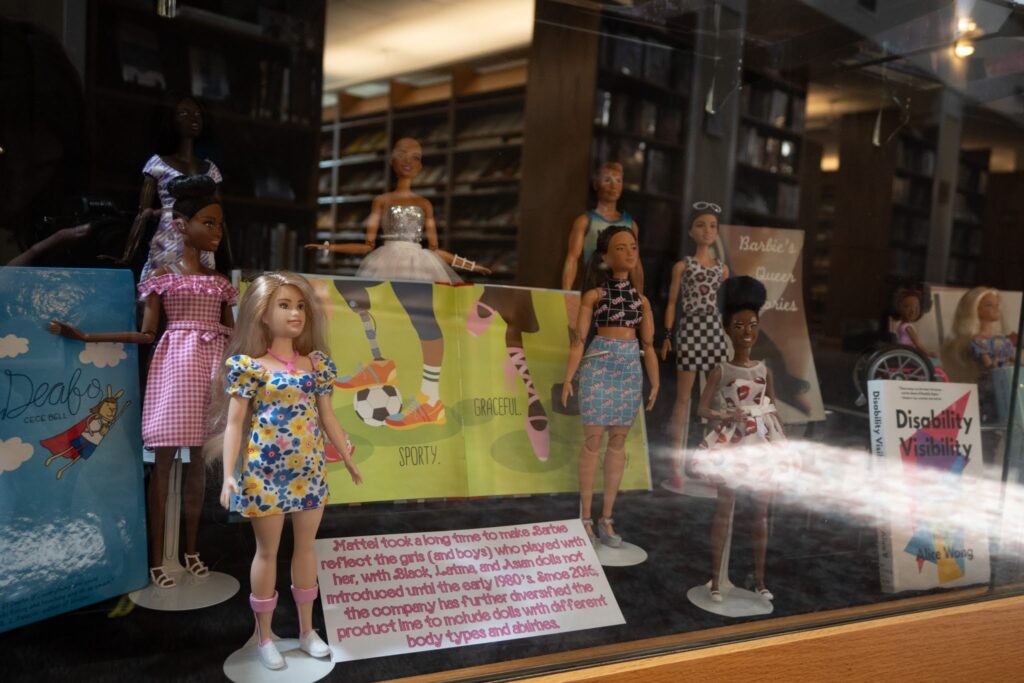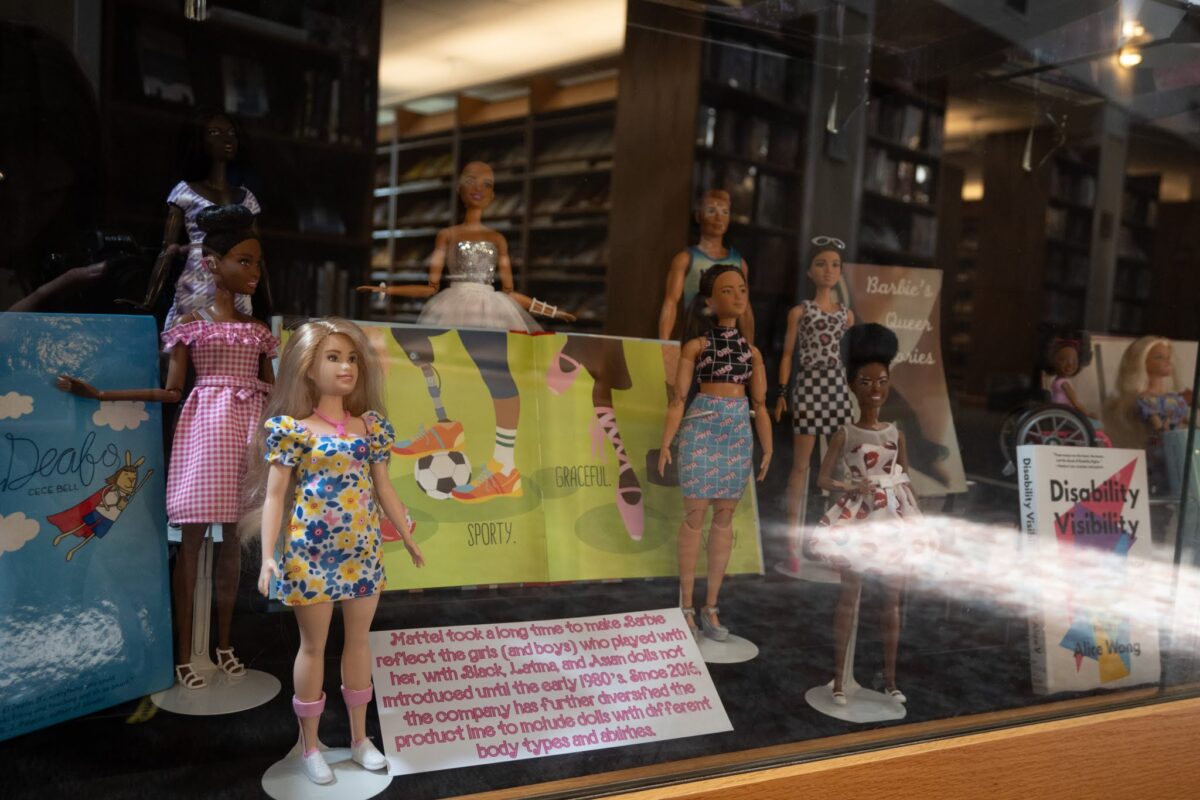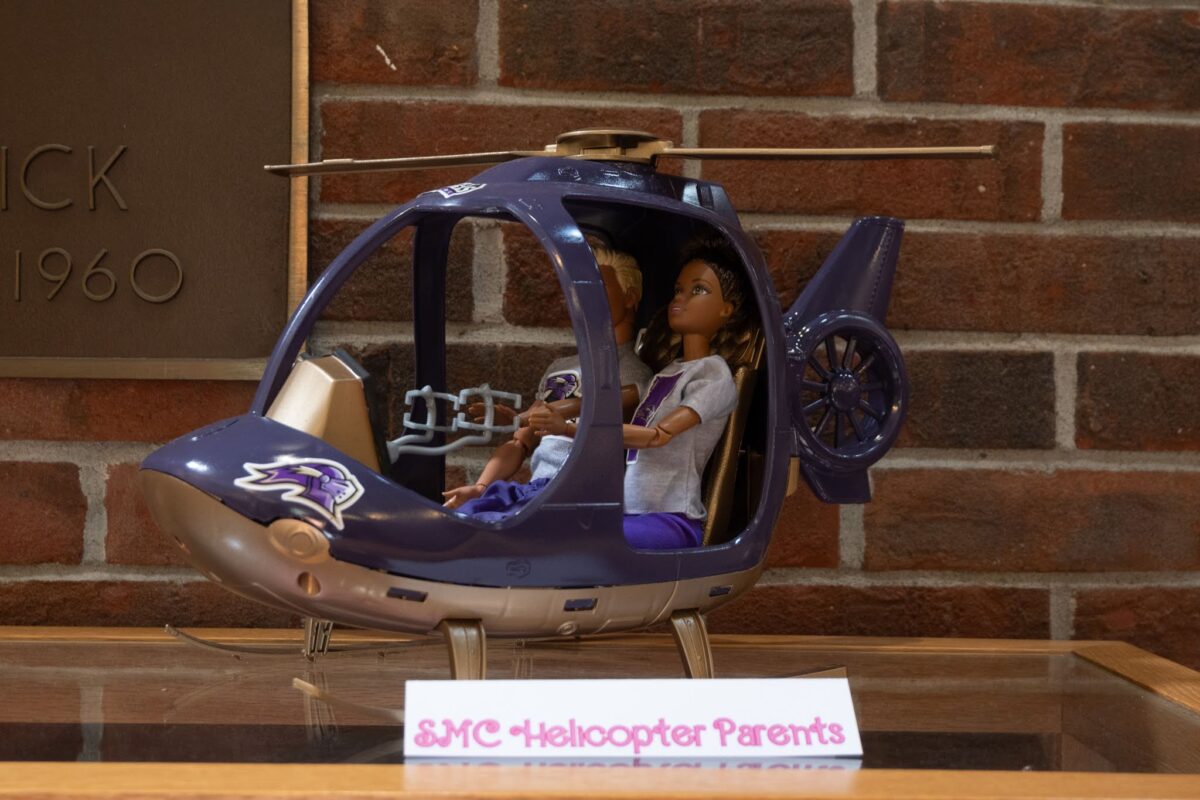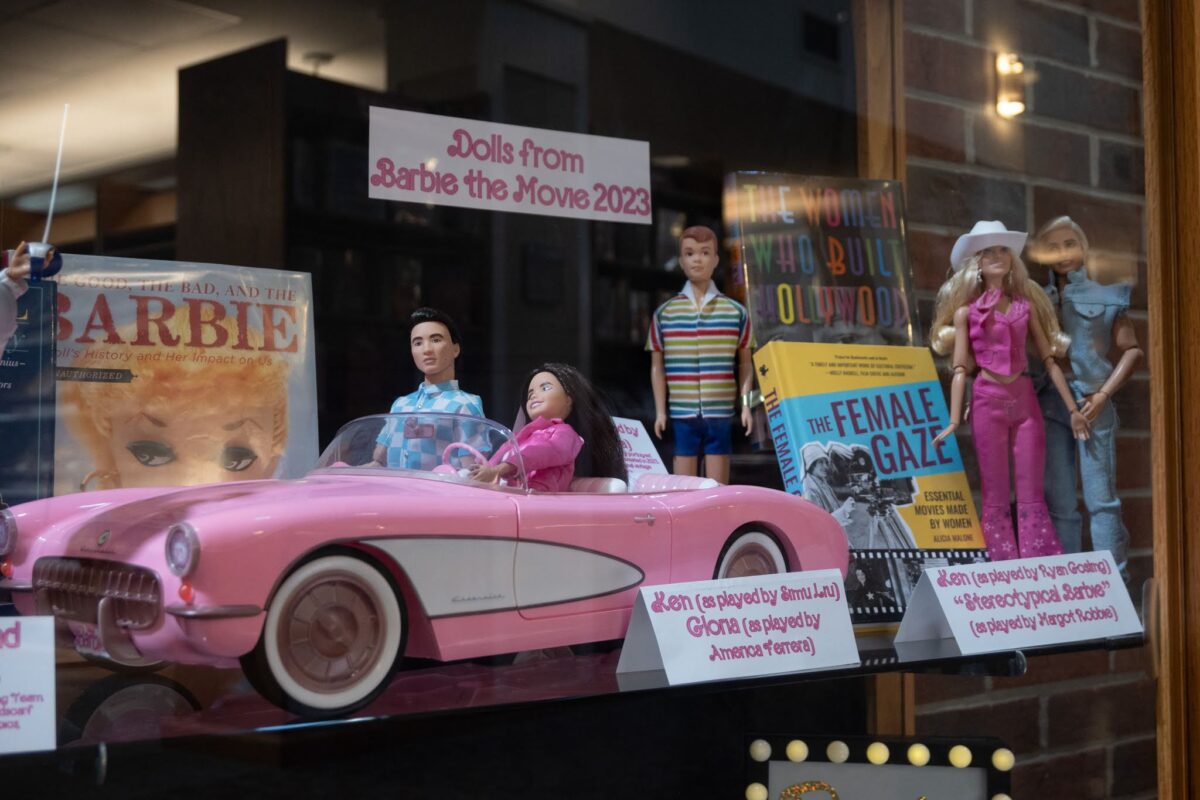Clara Wyatt/Staff Writer/cwyatt@mail.smcvt.edu
Most people first encountered Barbie in the toy aisle when they were younger, oftentimes picking one up. As they grew older, many lost interest in the doll. Suddenly, college students across the nation are interested in Barbie again, and St. Michael’s students are no exception. A display in Durick Library showcases Barbie in all her new found glory.
This summer, Barbie swept the nation, creating excitement and stimulating conversation since its July release. Raking in 1.38 billion dollars in global box office earnings, it became the highest grossing film by a female director. Aside from massive revenue, the film’s impact lies in its shifting of American’s ideas around Barbie. The film has become a source of female empowerment and gender expression all across the nation.
“The world discovered what we already knew, that Barbie was really cool,” said Peter Harrigan, professor of Fine Arts and Barbie collector.
The Barbie display will be on the first floor of Durck Library for the month of September. The purpose of the display is showcasing some of Harrigan’s Barbie collection, and leaning into the cultural movement.
Dolls included in the display include some from Mattel’s Inspiring Women line, which are female trailblazers like Rosa Parks, Maya Angelou, Ella Fitzgerald and Bessie Coleman. The Christian Dior and Yves St. Laurent dolls highlight the fashion aspect of Barbie.
There are also dolls from other collections that reach a larger demographic of people. Examples include a doll with a prosthetic leg, one with Vitiligo, and another in a wheelchair. These dolls are meant to highlight the diversity of women’s bodies, and the diversity within society.
Each doll is paired with a book written by or related to the figure they represent.
The other element of the display is interactive. There is a selfie station with a variety of costumes and props that students can use when taking photos. Not only can students dress up as any kind of Barbie, they can express themselves with boards that say “This Barbie is…at St. Michael’s College” and “This Ken is…at St. Michael’s College,” allowing students to fill in the blanks however they see fit.
“A woman could be Ken or a man could be Barbie, anybody can be anybody, to create a playful space where people could have fun and express different ideas about gender,” said Harrigan.
The library staff welcomed the idea of the display.
“It really gives us the chance to bring students in, and to have fun and be playful,” said Jamie Slater, the library’s Evening Circulation Supervisor. “It’s a good space where you can find more resources to just dig into the history of the doll or the history that surrounds it.”
Harrigan’s fascination with Barbie started when he was young. Inheriting toys from his older siblings, he was drawn to Barbies.
“I just remember thinking that they were really cool and glamorous, and I was interested in fashion,” Harrigan said. “Having a toy where you could play that out was kind of cool.”
As Harrigan grew older, societal gender norms made it clear to him that Barbie wasn’t the toy he was supposed to be playing with. As a result, his love for Barbie dolls faded to an underlying interest until adulthood.
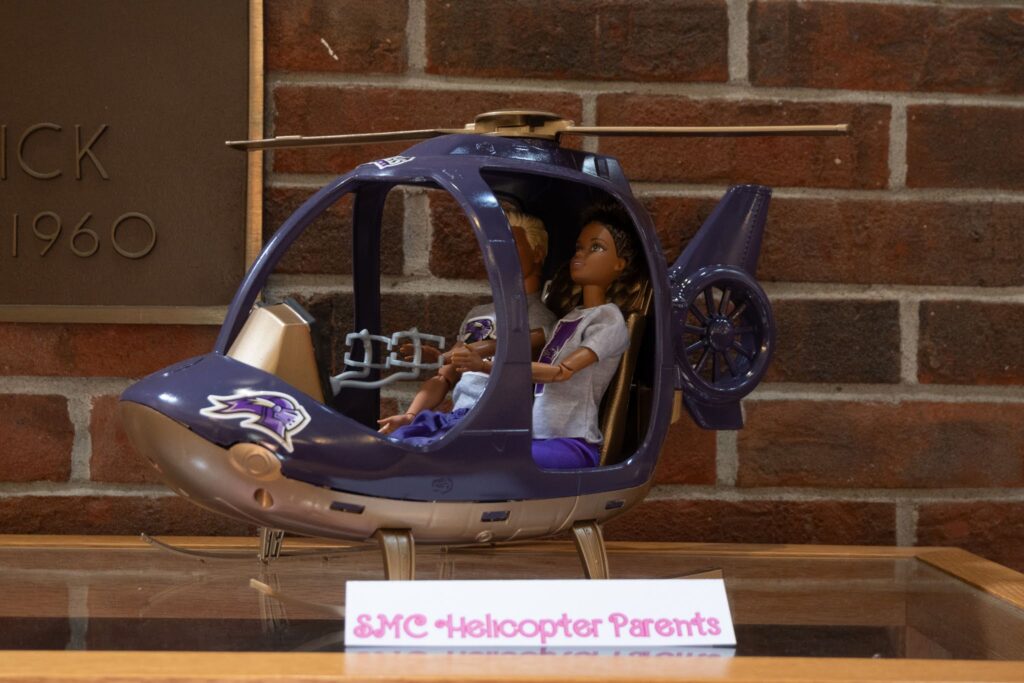
Harrigan has participated in Barbie conventions, joined Barbie bulletin boards, and posted about his Barbie collection on Instagram as a way to stay connected to the community.
When the movie came out, Harrigan and his friends in the Barbie community were receiving requests to share their Barbie knowledge and personal collections. “Everybody got their little bit of the pink spotlight,” Harrigan said.
The central theme of the film is the complexity of being a woman, and the struggle to navigate the patriarchal and misogynistic world we live in. The unrealistic expectations of women’s physical appearance is another theme.
Barbie being at the center of the conversation about women’s place in society is not new. In an NPR episode, “Is Barbie a feminist icon? It’s complicated,” M.G. Lord, the author of “Forever Barbie: The Unauthorized Biography Of A Real Doll” explains the perspective of Barbie being part of the feminist movement.
“Initially, her message was very, I think, proto-feminist,” M.G. Lord said in the interview. “The little thing has that body, but she also has, from the get-go, paraphernalia for a self-supporting career.”
Barbie promoted the idea that women belonged outside of the home, and in the workplace as professionals. Barbie demonstrated to young women and girls that they did not have to fit into the gendered roles of housewife and mother.
Vermilya touched on this interpretation of Barbie within the feminist movement.
“Barbie was not advocating having babies, making babies, taking care of babies,” Vermilya said. “She was off having all these careers, doing all these really cool things…it was a real paradigm shift for me to see Barbie in that perspective.”
Historically, Barbie has only been seen as an unrealistic depiction of what a woman’s body is supposed to look like, harming the self image of many young women. The idea that Barbie could empower women and girls, and show them all the opportunities that are available to them, was often overlooked. The use of Barbie in a movie that challenges gender norms has shed light on Barbie’s positive impact.

